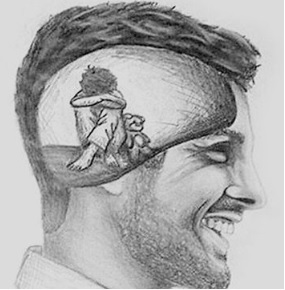
Many therapeutic paths exist to working on healing trauma. Trauma comes in many forms, from obvious capital “T” Trauma to chronic and small “t” trauma. Most (if not all) of humans have experienced one or more traumatic experience by the end of their teen years.
This article attempts to -very briefly- list some of these approaches.
The actual applications of these techniques clinically depends on the experience and level of intuition of the therapist in order to provide the client what the client needs.
“If you are human, you have been traumatized.”
— Ethan Wise
It is my opinion that almost all of the methods listed below are in one way or another a subset of “hypnosis” which is one of the oldest mental health techniques in existence. Many of these techniques overlap, as well.
These methods vary from facing trauma head-on, to completely bypassing the recalling of the traumatic experiences.
Basic principles utilized in therapies:
- Age regression & parts therapy
- Re-writing the memory in a positive way
- Inner child work
- Forgiveness therapy
- Desensitizing
- Exposure therapy
- Watching the trauma with detachment
- Trauma release techniques
- Hemispheric synchronizing
- Somatic (body) experiencing
- Energy psychology and energy healing
- Integration or reintegration
Specific therapies:
- Hypnotherapy
- EMDR and EMDR-like techniques
- Accelerated resolution therapy (ART)
- Psychological kinesiology (PSYCH-K)
- Somatoemotional release
- Traumatic Incident Reduction (TIR) imagines viewing a movie of the trauma memory, and then discuss it with the therapist, and repeat.
- Progressive Counting (PC) is a variant of Counting Method (CM), developed by Dr. Greenwald. In PC, the client visualizes a series of progressively longer movies of the trauma as the therapist counts out loud first from one to 10, to 20, 30, and so on.
Other techniques exist that fall somewhat within the realm of talk therapy such as Cognitive Processing Therapy (CPT) where the client writes down the details of the trauma, prolonged exposure (PE) therapy where the client talks about the details of the trauma over and over, and narrative therapy.
“Trauma experiences fall on a spectrum, Trauma Spectrum Disorders will one day be recognized by all mental health professionals and healers.”
— Ethan Wise
The act of recalling a traumatic memory (visual, emotional, automatic, somatic, or subconscious) is a hypnotic process in itself. When we go into a PTSD response, when we see flashbacks, images, or when feelings manifest, these come from the subconscious mind, and they arise automatically, just like any subconscious programming, they bypass the logical thinking mind; The automatic nature of these experiences reflect the strength of the subconscious mind. While this may make you feel out of control, or worse, the same hidden subconscious mechanism allows you to create deep healing.
With the correct approach, the power of the subconscious mind can be harnessed in a mindful and skillful manner to allow for healing, to transform trauma, disconnection, and pain into compassion and reintegration, resulting in growth.
The state of hypnosis is a normal everyday state of mind; within this state multiple therapeutic approaches can be utilized. Therapy done with a client in hypnosis (hypnotherapy) enables a skilled therapist to utilize methods from a variety of options, based on every individual’s needs.
“Until you make the unconscious conscious, it will direct your life and you will call it fate.” —Carl Jung
.
.







